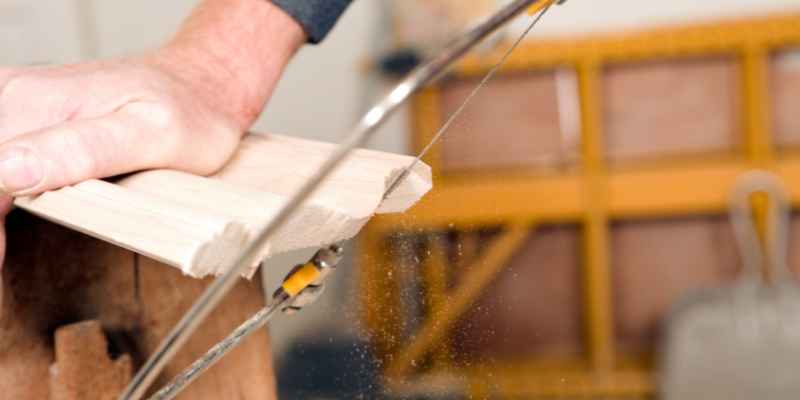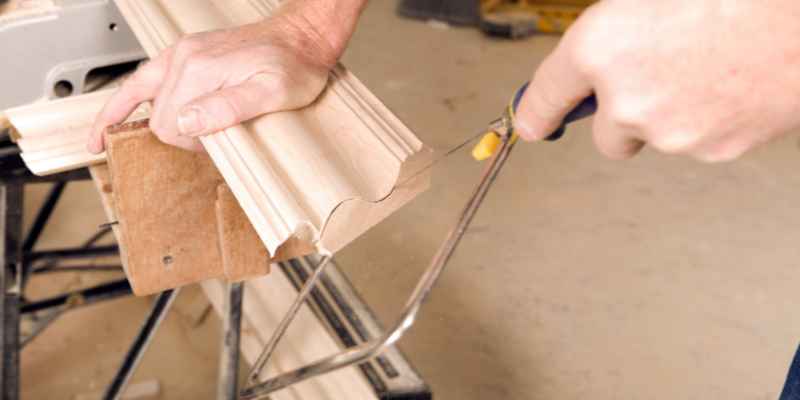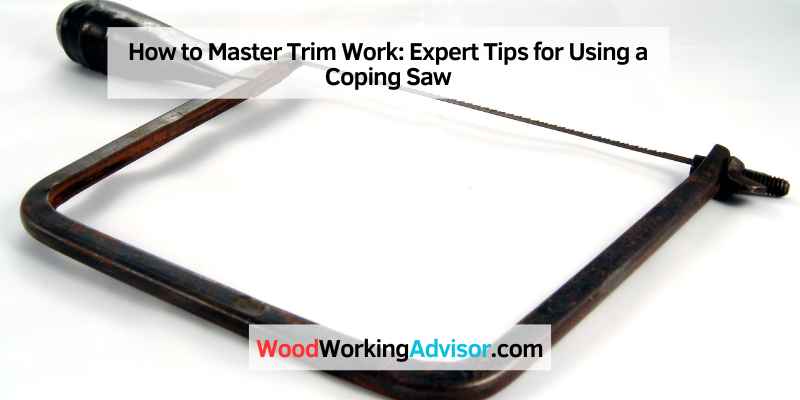To use a coping saw for trim, align the saw blade with the desired cutting line and gently saw back and forth in a steady motion. Use light pressure to prevent splintering and make sure to follow the curved shape of the trim.
Trimming is an important step in enhancing the aesthetics and detail of any woodworking project. Using a coping saw is an effective method to achieve precise and intricate cuts for trim work. Whether you are a professional woodworker or a DIY enthusiast, mastering the technique of using a coping saw can greatly improve the look of your trim.
We will explore the step-by-step process of using a coping saw for trim and provide some helpful tips to ensure your success. So, let’s dive in and discover how to utilize this versatile tool to achieve seamless and flawless trim for your woodworking projects.
Mastering The Techniques
As you become more proficient with a coping saw, mastering techniques such as correct grip and hand position, making intricate cuts, and dealing with curved surfaces will allow you to create flawless trim work. Let’s take a closer look at these essential techniques below.
Correct Grip And Hand Position
Achieving the correct grip and hand position is crucial for effective coping saw use. Hold the handle firmly with your dominant hand while using your non-dominant hand to guide the blade. Maintain a comfortable yet firm grip to ensure precise and controlled cuts.
Making Intricate Cuts
When making intricate cuts with a coping saw, it’s essential to go slow and steady. Utilize light, controlled movements to navigate around detailed patterns or tight corners. Position the blade to follow the desired trim shape, and gently maneuver the saw along the marked lines.
Dealing With Curved Surfaces
Coping saws are particularly adept at handling curved surfaces when trimming. When working with round or irregular shapes, pay close attention to the blade angle and adjust it as necessary to maintain a smooth cut. Move the saw in a fluid, consistent motion to achieve clean and precise results on curved surfaces.

Troubleshooting Common Issues
Learn the best techniques for troubleshooting common issues when using a coping saw for trim. Discover practical tips and step-by-step instructions to ensure smooth and efficient cutting.
Preventing Wood Splitting
Wood splitting can be a common issue when using a coping saw for trim work. However, by following a few simple steps, you can prevent this problem and achieve clean, precise cuts.
Here are some tips to prevent wood splitting:
- Choose the right blade: Select a blade with a higher TPI (teeth per inch) count to ensure fine and even cuts without putting excessive pressure on the wood.
- Mark the cut line: Use a pencil or a sharp knife to mark the precise cut line on the wood. This will help you maintain accuracy and avoid making unnecessary cuts that can cause splitting.
- Start with a pilot hole: If you’re working with delicate or fragile wood, it’s a good idea to start with a small pilot hole. This will give the blade a starting point and reduce the likelihood of splitting.
- Apply gentle pressure: When cutting, apply even and gentle pressure on the saw, allowing the blade to do the work. Avoid forcing the saw through the wood, as this can lead to unnecessary splitting.
Avoiding Blade Breakage
Blade breakage can be frustrating, but there are techniques you can employ to prevent it and ensure a smooth cutting experience.
Consider the following strategies to avoid blade breakage:
- Choose the right blade: Select a coping saw blade that matches the thickness and hardness of the wood you’ll be working with. Blades with smaller teeth are better suited for more intricate and delicate cuts.
- Apply proper tension: Make sure the coping saw blade is correctly tensioned. Too much tension can lead to excessive strain and potential breakage, while too little tension can result in inaccuracies.
- Use a slow and steady motion: Avoid rushing through the cut. Instead, maintain a slow and steady motion to minimize the risk of blade breakage. Let the saw’s teeth do the work without exerting excessive force.
- Regularly inspect the blade: Check the blade for any signs of wear and tear, such as dullness or bending. Replace the blade if necessary to ensure optimal cutting performance.
Solving Blade Angling Problems
If your coping saw blade is angling during the cut, there are a few troubleshooting techniques you can try to rectify this issue.
Follow these steps to solve blade angling problems:
- Check blade alignment: Ensure that the coping saw blade is properly aligned with the handle. If it’s misaligned, reposition it to ensure a straight and accurate cut.
- Maintain correct blade tension: Incorrect tension can cause the blade to twist and angle. Adjust the tension to maintain proper alignment and achieve straight cuts.
- Hold the saw correctly: Grip the handle firmly and keep your arm steady throughout the cut. This helps maintain control and prevent the blade from angling.
- Practice proper cutting technique: Use smooth and controlled strokes while cutting. Avoid applying excessive side pressure, as this can lead to blade angling.

Conclusion
Incorporating a coping saw for trim work allows for precision and versatility in your projects. By following the tips and techniques outlined in this guide, you can achieve professional-looking results and elevate the aesthetic of your space. As you gain experience and confidence with this tool, you’ll find that it becomes an indispensable asset in your woodworking endeavors.

